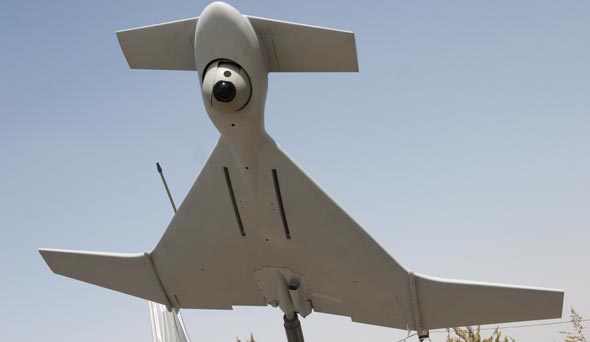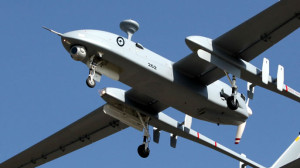
The Indian Air Force is planning to embark on a tri-service wide upgrade of its Israeli-supplied unmanned aerial vehicles (UAVs), as part of an unprecedented program that could cost up to one billion US$. Indian military services are already operating more than 150 UAVs, mostly Searcher Mk II and Heron I procured from Israel Aerospace Industries since the early 2000s.
The upgrading program is likely to introduce new technologies developed in the past decade, particularly in more compact, capable and reliable avionic equipment, improved propulsion (currently provided with Searcher Mk III). As for the Heron, modern configurations are currently deployed with satellite link, providing for better performance over mountainous terrain and at longer range. Part of the Indian Herons, particularly the new batch, are likely to be equipped with such capabilities and the upgrade will bring other platforms up to date, thus simplifying maintenance and support.
[nonmember]To learn about the new the modernization offered for these UAV , Sign up for Defense-Update Premium Account
[/nonmember]
[ismember]Major overhaul and modernization is likely to include the ground-based systems, which have been using off-the shelf equipment. In recent years IAI has introduced a modern console, common to all its UAS, and it is likely that such systems are provided to its largest customers, improving performance and support. The UACS also provides for advanced and realistic training, integrating real and virtual information into a full mission simulation.
Through the years IAI has also introduced improved automatic takeoff and landing capabilities, although the Indian aircraft have been equipped with such features from the beginning. India has been locally producing the Heron I, based on kits delivered by IAI and it is likely that the upgrades will also be done in India, using Israeli and locally produced kits.
India has equipped its Searchers and herons with a number of sensors, such as the MOSP EO/IR payload, EL/M-2022U maritime surveillance radar. Other payloads currently supported include, better sensors with higher resolution for the MOSP, as well as highly capable, yet much lighter POP-3000 day/night mission-configurable payloads, which would be attractive for the Searcher. Both MOSP and POP are currently supporting short-cycle targeting capabilities utilizing integrated laser designators, which can also support on-board weapons if required. Other capabilities, including Communications Intelligence (COMINT) and Electronic Intelligence (ELINT) are also available, as well as communications relays supporting ground and naval operations.

[/ismember]The Indian military currently has about 100 searcher Mk II and 50 Heron I drones. Since the initial fielding of these drones India has not attempted to equip drones with weapons, but New Delhi has clearly indicated it has the plans and is investing the resources to obtain combat UAV capabilities. [ismember]Equipping the Heron for such tasks will not be simple, but is considered possible, in light of the scope and funding of the current upgrade. In the coming years the Indian Army is planning to field the Lahat laser-guided missile, equipping the Arjun MkII main battle Tank. The missile is offered as part of the Nimrod family of missiles developed by IAI MBT, capable hitting targets from short range up to 25km and beyond. The existence of a smallest missile of this family (similar to the LAHAT), dubbed ‘Micholit’ was reported by Palestinian sources, after duds of such missile were spotted in Gaza strip. Could the Indian Heron I be configured to carry such missiles, thus becoming India’s first armed UAV?[/ismember]
In parallel to the upgrading of its UAVs, The Indian Air Force is preparing for the induction of the first ‘suicide drone’ wing, utilizing the Harop loitering weapons obtained in 2010 from Israel. The first of 10 HAROP units is expected to become operational in 2013. India is already operating the radar suppression variant of the weapon, the HARPY.
[ismember]The Harop, developed by Israel Aerospace Industries (IAI) is a ‘disposable’ unmanned aerial vehicle equipped with a multi-sensor payload and 23 kg warhead offering the capability to conduct persistent surveillance and selective attack over a designated area, thus denying enemy activity over certain period of time. The HAROP measure 2.5 meters in length, wingspan is 3 meters can loiter in position for nearly six hours.
The Harop will give the Indian Air Force the capability of hitting high value targets such as air bases, missile sites, radar stations and command posts, even in heavily air-defended areas. The weapon’s persistence will also deny the enemy the opportunity of deploying certain assets – including aircraft taxying out of their shelters or ballistic missiles moving out from their shelters, into launching positions.[/ismember][nonmember]
[/nonmember]












